Why you can trust Credit Card
More Info
On this page
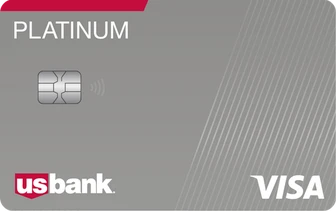
BEST FOR CUSTOMIZABLE REWARDS
U.S. Bank Cash+® Visa Signature® Card

Reward rate
5
5% cash back on your first $2,000 in eligible net purchases each quarter on the combined two categories you choose.
3
5% cash back on prepaid air, hotel and car reservations booked directly in the Rewards Travel Center.
-1
1% cash back on all other eligible purchases.
1
1% cash back on all other eligible purchases.
Intro offer
$200 bonus
Annual fee
$0
Regular APR
16.74% - 26.74% (Variable)
Recommended credit
Good to Excellent (670 - 850)
Pros
- Multiple rotating and fixed bonus categories, which can make it easier to earn rewards quickly
- The $200 sign-up bonus (after spending $1,000 within the first 120 days of account opening) increases the card’s first-year value
Cons
- The $2,000 combined spending cap each quarter for your chosen 5% categories limits your ability to rake in rewards
- Having to track and enroll in rotating categories can be a hassle for some
- New! $200 bonus after spending $1,000 in eligible purchases within the first 120 days of account opening.
- 5% cash back on your first $2,000 in combined eligible purchases each quarter on two categories you choose
- 5% cash back on prepaid air, hotel and car reservations booked directly in the Rewards Travel Center
- 2% cash back on one everyday category, like Gas Stations/EV Charging Stations, Grocery Stores or Restaurants
- 1% cash back on all other eligible purchases
- 0% Intro APR on purchases and balance transfers for the first 15 billing cycles. After that, a variable APR currently 16.74% – 26.74%
- No Annual Fee
- Pay over time by splitting eligible purchases of $100+ into equal monthly payments with U.S. Bank ExtendPay™ Plan.
- Terms and conditions apply.
ADDITIONAL FEATURES
Purchase intro APR
0% Intro APR on purchases for the first 15 billing cycles.
Balance transfer intro APR
0% Intro APR on balance transfers for the first 15 billing cycles.

BEST FOR PERSONAL LOAN ALTERNATIVE
Upgrade Cash Rewards Elite Visa®

Reward rate
2.2
Earn 2.2% unlimited cash back on card purchases every time you make a payment
Intro offer
$200
Annual fee
$0
Regular APR
8.99% - 29.99% (Variable)
Recommended credit
Good to Excellent (670 - 850)
Pros
- You won’t need to use your reward earnings to offset any maintenance fees.
- You’ll earn a bonus after you open a Rewards Checking account and make three purchases with the card in your first 60 days.
Cons
- The high end APR range is well above average. That could prove costly if you don’t have the credit needed to qualify for the lower range and you end up carrying a balance.
- You won’t get a break on interest if you carry a balance since there are no intro APR offers on purchases or balance transfers.
- $200 bonus on your Upgrade Card after opening a Rewards Checking account and making 3 debit card transactions within 60 days.*
- New Feature: Pay your balance in full early each month and avoid interest with EarlyPay.
- Earn 2.2% unlimited cash back on card purchases every time you make a payment
- See if you qualify in seconds with no impact to your credit score
- No Fees – $0 annual fees, $0 activation fees, $0 maintenance fees
- Combine the flexibility of a card with the low cost and predictability of a loan
- Access to a virtual card, so you can start earning while you wait for your card to arrive in the mail.
- Contactless payments with Apple Pay® and Google Pay™
- Mobile app to access your account anytime, anywhere
- Enjoy peace of mind with $0 Fraud liability
- *To qualify for the $200 welcome bonus, you must open and fund a new Upgrade Rewards Checking Account and make 3 debit card transactions within 60 days of your Upgrade Card account opening. The bonus credit will be posted to your Upgrade Card as a rewards credit within 1-2 billing periods following the third debit transaction on your Rewards Checking account. Your Upgrade Card must be in good standing to receive the bonus.
ADDITIONAL FEATURES
Purchase intro APR
N/A
Balance transfer intro APR
N/A
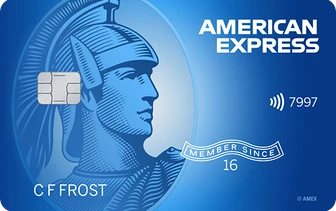
BEST FOR GAS
Blue Cash Everyday® Card from American Express

Reward rate
3
3% Cash Back at U.S. supermarkets on up to $6,000 per year in purchases, then 1%.
1
New! 3% Cash Back on U.S. online retail purchases, on up to $6,000 per year, then 1%.
-1
1% Cash Back on other purchases.
1
1% Cash Back on other purchases.
Intro offer
$200
Annual fee
$0
Regular APR
16.24%-27.24% Variable
Recommended credit
Good to Excellent (670 - 850)
Pros
- It carries one of the best combined cash back rates available at no annual fee at U.S. gas stations and U.S. supermarkets. Those two categories make up a big chunk of the average person’s budget.
- You can earn $7 back per month on The Disney Bundle streaming package, which includes Disney+, Hulu, and ESPN+ (each month you spend $13.99 or more on an eligible subscription, terms apply). To earn that much back in a month via the card’s 3 percent categories, you’d typically need to spend over $230.
Cons
- You’ll only earn 3 percent cash back on your first $6,000 in annual spending in each of the card’s bonus categories (then 1 percent). While that’s a high limit, it could hold you back if you’re sharing an account across multiple households.
- The card carries a 2.7 percent foreign transaction fee, so it’s not a good option if you’re looking for a single rewards card you can use at home and abroad.
- Earn a $200 statement credit after you spend $2,000 in purchases on your new Card within the first 6 months.
- No Annual Fee.
- Balance Transfer is back! Enjoy 0% intro APR on purchases and balance transfers for 15 months from the date of account opening. After that, 16.24% to 27.24% variable APR.
- 3% Cash Back at U.S. supermarkets on up to $6,000 per year in purchases, then 1%.
- New! 3% Cash Back on U.S. online retail purchases, on up to $6,000 per year, then 1%.
- 3% Cash Back at U.S. gas stations, on up to $6,000 per year, then 1%.
- Get $7 back each month after using your Blue Cash Everyday® Card to spend $13.99 or more each month on an eligible subscription to The Disney Bundle, which includes Disney+, Hulu, and ESPN+. Enrollment required.
- Terms Apply.
ADDITIONAL FEATURES
Purchase intro APR
0% on purchases for 15 months
Balance transfer intro APR
0% on balance transfers for 15 months
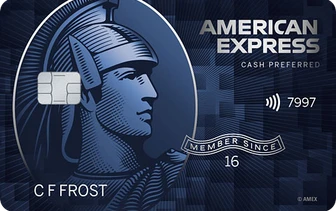
BEST FOR GROCERIES
Blue Cash Preferred® Card from American Express

Reward rate
6
6% Cash Back at U.S. supermarkets on up to $6,000 per year in purchases (then 1%).
1
6% Cash Back on select U.S. streaming subscriptions.
3
3% Cash Back at U.S. gas stations
0
3% Cash Back at U.S. gas stations
1
1% Cash Back on other purchases
Intro offer
$350
Annual fee
$95
Regular APR
16.24%-26.24% Variable
Recommended credit
Good to Excellent (670 - 850)
Pros
- The base reward program is uber-lucrative, making this card a good choice for people looking for long-term value.
- You don’t have to keep track of rotating spending categories or enrollment deadlines.
Cons
- There is no intro APR offer on balance transfers.
- You won’t earn the extra rewards for grocery shopping at major superstores and wholesale clubs, as those don’t count as U.S. supermarkets.
- Earn a $350 statement credit after you spend $3,000 in purchases on your new Card within the first 6 months.
- Buy Now, Pay Later: Enjoy $0 intro plan fees when you use Plan It® to split up large purchases into monthly installments. Pay $0 plan fees on plans created during the first 12 months after account opening. Plans created after that will have a fixed monthly plan fee up to 1.33% of each purchase amount moved into a plan based on the plan duration, the APR that would otherwise apply to the purchase, and other factors.
- Low intro APR: 0% intro APR for 12 months on purchases from the date of account opening, then a variable rate, 16.24% to 26.24%.
- 6% Cash Back at U.S. supermarkets on up to $6,000 per year in purchases (then 1%).
- 6% Cash Back on select U.S. streaming subscriptions.
- 3% Cash Back at U.S. gas stations and on transit (including taxis/rideshare, parking, tolls, trains, buses and more).
- 1% Cash Back on other purchases.
- Cash Back is received in the form of Reward Dollars that can be redeemed as a statement credit.
- $95 Annual Fee.
- Terms Apply.
ADDITIONAL FEATURES
Purchase intro APR
0% on purchases for 12 months
Balance transfer intro APR
N/A
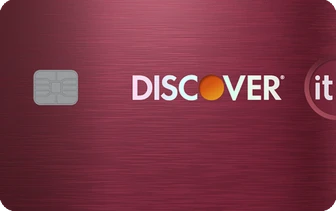
BEST FOR ROTATING CASH BACK CATEGORIES
Discover it® Cash Back

Reward rate
5
Earn 5% cash back on everyday purchases at different places each quarter like Amazon.com, grocery stores, restaurants, gas stations and when you pay using PayPal, up to the quarterly maximum when you activate.
1
Plus, earn unlimited 1% cash back on all other purchases – automatically.
Intro offer
Cashback Match™
Annual fee
$0
Regular APR
13.49% - 24.49% Variable
Recommended credit
Good to Excellent (670 - 850)
Pros
- Discover will match the cash back you earn at the end of the first year.
- There are a few cash back redemption options, including credit to your account and donations.
Cons
- You must enroll to take advantage of the bonus categories each quarter.
- There is a spending limit on your highest cash back category each quarter ($1,500 in combined purchases per quarter).
- Intro Offer: Unlimited Cashback Match – only from Discover. Discover will automatically match all the cash back you’ve earned at the end of your first year! There’s no minimum spending or maximum rewards. You could turn $150 cash back into $300.
- Earn 5% cash back on everyday purchases at different places each quarter like Amazon.com, grocery stores, restaurants, gas stations and when you pay using PayPal, up to the quarterly maximum when you activate. Plus, earn unlimited 1% cash back on all other purchases – automatically.
- New! Discover helps remove your personal information from select people-search websites. Activate by mobile app for free.
- Every $1 you earn in cash back is $1 you can redeem.
- New Intro APR: Get a 0% intro APR for 15 months on purchases. Then 13.49% to 24.49% Standard Variable Purchase APR applies, based on credit worthiness.
- No annual fee.
ADDITIONAL FEATURES
Purchase intro APR
0% for 15 months
Balance transfer intro APR
0% for 15 months
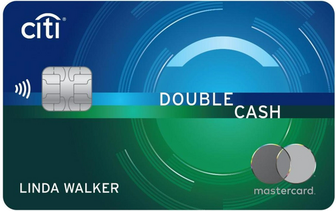
BEST FOR UP TO 2% CASH BACK
Citi® Double Cash Card

Reward rate
2
Earn 2% on every purchase with unlimited 1% cash back when you buy, plus an additional 1% as you pay for those purchases.
Intro offer
$200 Cash Back
Annual fee
$0
Regular APR
16.24% - 26.24% (Variable)
Recommended credit
Good to Excellent (670 - 850)
Pros
- You can convert your cash back earnings to Citi ThankYou points when paired with a card like the Citi Premier® Card, which can be redeemed for travel, gift cards and more.
- There are no spending category restrictions or rotating categories
Cons
- Your rewards can expire with this card if you don’t use it for a year.
- The sign-up bonus spending requirement is higher than you’ll find on many no-annual-fee cash back cards.
- Earn 2% on every purchase with unlimited 1% cash back when you buy, plus an additional 1% as you pay for those purchases.
- For a limited time, earn $200 cash back after spending $1,500 on purchases in the first 6 months of account opening.
- Balance Transfer Only Offer: 0% intro APR on Balance Transfers for 18 months. After that, the variable APR will be 16.24% – 26.24%, based on your creditworthiness.
- Balance Transfers do not earn cash back. Intro APR does not apply to purchases.
- If you transfer a balance, interest will be charged on your purchases unless you pay your entire balance (including balance transfers) by the due date each month.
- There is an intro balance transfer fee of 3% of each transfer (minimum $5) completed within the first 4 months of account opening. After that, your fee will be 5% of each transfer (minimum $5).
ADDITIONAL FEATURES
Purchase intro APR
N/A
Balance transfer intro APR
0% intro for 18 months on Balance Transfers
A closer look at Creditcrad’s best cards for good credit
Capital One SavorOne Cash Rewards Credit Card: Best for dining and entertainment
- What we love about the Capital One SavorOne: It’s rare for a no annual fee card to earn such robust rewards rates in these particular categories in dining, entertainment, popular streaming services and grocery store categories.
- Who this card is good for: Socialites and social butterflies who will make the most out of the SavorOne’s very generous dining rewards.
- Alternatives: The Discover it Chrome card is another card that offers competitive rewards rates on dining. It also tacks on gas rewards which is great for people who are often on the go, something that the SavorOne falls a bit short on.
Blue Cash Preferred Card from American Express: Best overall cash back for families
- What we love about the Blue Cash Preferred: The rewards categories on this card are some of the most popular spending categories for most consumers so if you play your cards right (pun intended), you’ll have a nice stack of rewards in your cash back match in your first year.
- Who this card is good for: On-the-go people who spend a fair amount of money at gas stations and restaurants. You can earn 2 percent in those categories on up to $1,000 in combined purchases each quarter, then 1 percent.
- Alternatives: The Capital One SavorOne Cash Rewards card outpaces the Discover it Chrome by a lot if your main squeeze is getting the most out of dining rewards.
Citi Rewards+ Card: Best for rewards on small purchases
- What we love about the Blue Cash Preferred: Thanks to the Citi Rewards+ Round Up feature, every purchase you make will be rounded up to the nearest 10 points. For example, a $4 coffee would be worth 10 points.
- Who this card is good for: Frequent supermarket and gas station shoppers who want to earn cash back rewards easily without big spending habits.
- Alternatives: If you want to expand beyond the Citi ThankYou® Points program, the Capital One Quicksilver Cash Rewards Card offers unlimited flat-rate rewards on all purchases, casting a wide net on your earning opportunities outside of a designated points program.
What does good credit mean?
A FICO Score between 670 and 739 generally qualifies as a “good” score. The “good” credit range for VantageScore is 661 to 780.
Lenders use credit scores and other financial information to determine what interest rates you qualify for. If your financial history shows that you consistently pay your bills in full and on time, you’re considered a low-risk debtor.
To everyday consumers and cardholders these numbers may seem vague and that they vary randomly from one to another. However, it’s important to know where you stand in the eyes of lenders and creditors. If you aren’t sure where that is, then your first step is to check your credit score.
How to build a good credit score
If you have fair credit or poor credit, it may be easier to improve your credit score than you think. Responsible spending is a great way to increase your credit score quickly, but if you want to get and keep good credit you need to pick up some soft skills as you use your credit card and pay each balance. Here are some best practices to follow when building credit that you should practice throughout your financial journey whether you have fair or excellent standing:
- Check your credit report. Check your credit report at least once a year. Note that your credit report reflects your full credit history, as opposed to the moment-in-time snapshot provided by your credit score. So when you check your report, look for errors and inaccuracies that could be holding you back.
- Correct any errors on your credit report. Some credit report errors can be as simple as a misspelled name or incorrect address, while others may involve outdated information and fraudulent accounts. Removing errors on your credit report is an essential step on your way to good credit.
- Pay on time across the board. Pay all your bills on time and in full, if at all possible. In addition to your credit card, your financial behavior with any other loan also plays a part in building credit. If you miss a mortgage or car payment, you’ll damage your credit score.
- Watch your credit utilization. Your credit utilization—how much of your available credit you’re using—is one of the key components in determining your credit score. Using more than 30 percent of your available credit could drive your score down.
- Let an older card age gracefully. If you have an old credit card, think about keeping it instead of closing it. An account held for a long period of time lengthens your credit history and shows you’re an experienced credit user.
Generally, consumers with good credit have a lengthy credit history, consistent payment history and a low credit utilization ratio.
How to maintain a good credit score
Once you reach the good credit score range, it’s time to maintain it or work toward an excellent credit score. If you’ve gotten here then you may already have a decent credit strategy, but it’s important you keep up those credit best practices if you want to graduate into the excellent credit range. Here are a few tips to follow when it comes to maintaining your good credit score:
- Take advantage of self-reporting tools. UltraFICO and Experian Boost let users report different activities like paying your monthly utilities as positive payment history that can be factored into your credit score. Leverage these tools as a way to maintain your credit in addition to your established good credit habits.
- Write a good faith letter. Past mistakes on your credit report can drag your score down. A good way to maintain your good credit score is to write goodwill or good faith letters directly to creditors detailing your acknowledgement of past mistakes, providing examples of current good habits and noting plans to continue these habits.
- Pay balances in full. While paying your credit card bill on time is key to building good credit, maintaining a good credit score comes with spending small amounts and always paying your bill in full each month to avoid carrying balances or gathering interest charges. The more often your card stays paid off, the better.
How to choose the best credit card for good credit
Note whether your credit score is a few points shy from either the excellent or fair credit range. If your score is only a few points away from excellent, you might include some cards from the excellent credit category in your search. If you are barely into the good credit range, it’s best to focus squarely on cards in the good credit category to avoid any denials. Either way, be responsible and only apply to cards you can feasibly be approved for, as too many card applications and denials in a short time frame will have a negative impact on your credit score.
Having good credit will qualify you for cards with fairly good rewards rates. Knowing which spending categories matter the most to you and whether or not you want to start strategizing to maximize reward earnings can go a long way. You may also decide it’s best to keep a low-maintenance card with a modest base rewards rate on all purchases while you continue your journey to earning an excellent credit score. Whatever route you choose, keep up the positive credit practices that got you a good credit score in the first place.
Different cards will offer different sets of perks and benefits outside of base rewards rates and you’ll want to evaluate each card to see which set of benefits best suits your needs. Examples of these benefits include travel insurance coverage, roadside assistance or even purchase protection. It can be tricky to decide what you’ll need for future transactions, but a good practice is to keep track of your expenses and needs for a couple months prior to deciding. Credit cards are best used on consistent, predictable purchases rather than impulsive ones. Maintaining awareness of where your money is going as well as how a card can compliment your transactions can make deciding what benefits are best for you a breeze.
There are plenty of credit cards for good credit that do not charge annual fees, but there are a few that do. Cards with annual fees often have perks and benefits that could help offset the added charge, but sometimes these benefits might come in the form of niche rewards for purchases you would never otherwise make. Know your budget, assess your needs and decide for yourself if an annual fee is worth it.
Still unsure if a credit card for good credit is right for you? Check out our Credit Card Spender Type Tool where you can get personalized credit card recommendations based on your credit score, spending habits and daily needs.
Financial freedom with good credit
Having good credit opens up avenues to financial flexibility beyond options for your next credit card and card responsibility is not the only way to build credit. You can use loans and rent payments to improve your score and climb the credit ladder, landing you better rates on financial products and services.
- Are you currently renting? You can report rent payments to the credit bureaus to boost your score even more.
- Find out when credit card companies report to the credit bureaus to time your credit card payments effectively.
- Learn what it means to have an 800 credit score and the perks that come with it.
In the news: Can you avoid Fed interest spikes with good credit?
The Federal Reserve increased interest rates for the second time this year on July 27 after its increase on June 15, potentially sparking a jump in credit card APRs. Having good credit doesn’t make you immune to these rising rates, so it’s important to be strategic with your credit cards to minimize the impact these higher rates have on your finances.
If you can, avoid carrying balances or consider a card with an introductory APR on balance transfers or purchases. Several cards available with good credit come with an intro APR offer, including the Discover it Cash Back, Blue Cash Everyday, Capital One SavorOne and Discover it Chrome. Intro offers like these often let you make interest-free payments for over a year, giving you a lengthy cushion to pay down an existing balance or manage new purchases while shielded from elevated interest rates.
While your credit score mostly determines which rate you’ll qualify for, some issuers offer lower rates than others and having good credit gives you more flexibility to choose among them. You may not see rates as low as those available to people with excellent credit, but having good credit still gives you plenty of terrific options.
How Bankrate scores credit cards for good credit
Rewards value
The best cards for cash back, miles or points offer competitive rewards rates, useful spending categories and easy-to-understand redemption policies.
APR
APR (annual percentage rate) represents the interest charges you pay if you carry a balance. Top credit cards offer affordable APRs, especially for those who have good or excellent credit scores.
Extras and discounts
Also known as welcome offers, sign-up bonuses give you the opportunity to earn cash back, points, statement credits and other types of rewards for meeting a spending requirement within a specified time. Bonuses with a good ratio of spending-to-value get high marks.
Cost of ownership
For each card that charges an annual fee, we ask the same question as you — is it worth it? We measure the annual fee against each card's features and benefits to estimate the overall value.
More resources for excellent credit consumers
If you have excellent credit, you can qualify for some of the best cards on the market. Here are some resources to help you get more information about credit cards and credit scores:
- Do you have an excellent credit score? Here’s why it matters.
- Learn more about excellent credit scores and what it means.
- Did your credit score drop? Find out why
Frequently asked questions about credit cards for excellent credit scores
There’s no quick fix for improving your credit score. Taking consistent action over time, even a relatively short period of time, is the key to boosting your credit score. If you have credit card debt, have a plan to pay it all off.
If you have a close friend or family member who has good credit, ask if they’ll add you as an authorized user to their existing credit account, which will improve your score when the card shows up on your credit report.
Good credit is important because it sends a signal to credit card issuers (and other types of lenders) that you’re trustworthy and reliable. Having good credit can make it easier to get approved for credit cards, secure a mortgage or a car loan. Furthermore, with good credit, you may qualify for lower interest rates when you refinance your current loans.
The basic difference between the two is the FICO score range. A fair credit score is between 580 and 669 while a good credit score ranges between 670 and 739. Being one level below good credit can make a huge difference when you apply for credit, as you could miss out on access to great offers on rewards, cash back and 0 percent interest cards. You could also end up paying higher interest when you borrow money with a fair credit score versus a good credit score.
The amount of time it will take to get a good credit score depends on factors like your credit habits, the consistency of those habits and any past financial mishaps. Some credit mistakes can live on your credit report and impede your score growth for as little as three months to as long as 10 years. If there are errors in your credit report holding you back, take the necessary steps to resolve them.
